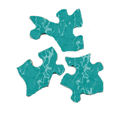John C.: Older Man With an Injury
Ann S. Merrill, RN, MA, MS
Formerly Assistant Professor, College of Nursing
University of Oklahoma
Oklahoma City, Oklahoma
Information Obtained during the First Visit/Encounter:
John C., a 70-year-old man, lived alone in a one bedroom apartment for senior citizens that was on the city bus line. He had no family in the area. When the student nurse arrived at his the door, he was hugging his right arm to his body; he said that he tripped over his cat and fell when going to the bathroom last night.
John complained that he had pain in his right arm since falling. He reported that his pain was a 3 on a 0 to 10 pain scale with 10 being the most severe. His radial pulse was intact, and he was able to move all his fingers with adequate circulation to his hand. His forearm and elbow were slightly bruised and swollen without disfigurement of the joint, and his skin was intact.
During the visit, John said that it was difficult to use his right arm to dress and cook for himself, and grimaced when he was asked to flex and extend his arm. He also said that the aspirin he took" really didn't do any good" and asked, "Why does it still hurt? Do you think I broke something?" The student nurse explained that swelling can stimulate pain and that x-rays were necessary to determine whether he had a broken bone. As they talked about tissue healing, the student nurse said that the swelling and bruising should decrease and that his range of motion should improve during the next few days, if he did not damage his bones, tendons or ligaments. John had not contacted his doctor, indicating that he did not want to bother anyone and did not want to waste money. The student nurse urged John to see his doctor, and explained that his Medicare benefits should cover most of the charges. Although reluctant, John agreed that the student could call his doctor; they made an appointment for the next morning. John said his neighbor would accompany him on the bus.
The student nurse suggested additional ways to help decrease pain, such as using a sling for immobilization, and using distraction and relaxation by listening to some favorite music and petting his cat, Buddy. The student made a sling, applied it, and explained the symptoms of impaired circulation that would need immediate reporting.
John shared that he was afraid the apartment manager will find out about his pet and evict him, indicating that Buddy is "the best friend I ever had and I won't get rid of him”. The student asked John if he was lonely. He replied that he did not need more friends, and was “happier” than he used to be. They discussed ways to prevent similar accidents from happening. John said he could put the cat in a box at night; he did not want to leave a light on all night because it would increase his electric bill. They talked about pet carriers and nightlights. John said he could not afford a pet carrier, but would buy a nightlight next time he went to the store. The student nurse offered to find a pet carrier; John said he would use one at night if he had one. Before the student nurse left, they scheduled a follow-up phone call the next afternoon.
Application of the Omaha System:
DOMAIN: ENVIRONMENTAL
Problem: Residence (high priority)
Problem Classification Scheme
Modifiers: Individual and Actual
SIGNS/SYMPTOMS OF ACTUAL:
unsafe storage of dangerous objects/substances
inadequate safety devices
Intervention Scheme
Category: Teaching, Guidance, and Counseling
TARGETS AND CLIENT-SPECIFIC INFORMATION:
safety (low-wattage night light, pet carrier)
Category: Case Management
TARGETS AND CLIENT-SPECIFIC INFORMATION:
other community resource (needed a free pet carrier)
Problem Rating Scale for Outcomes
Knowledge: 2-minimal knowledge (identified some hazards and ways to increase safety)
Behavior: 2-rarely appropriate behavior (no night light or pet carrier; agreed to use them)
Status: 3-moderate signs/symptoms (risk of injury, especially during night; pet on premises violates lease agreement)
DOMAIN: PSYCHOSOCIAL
Problem: Social contact (low priority: provide interventions and rate if John decides that he is interested in changing his lifestyle)
Problem Classification Scheme
Modifiers: Individual and Actual
SIGNS/SYMPTOMS OF ACTUAL:
limited social contact
minimal outside stimulation/leisure time activities
DOMAIN: PHYSIOLOGICAL
Problem: Pain (high priority)
Problem Classification Scheme
Modifiers: Individual and Actual
SIGNS/SYMPTOMS OF ACTUAL:
expresses discomfort/pain
compensated movement/guarding
facial grimaces
Intervention Scheme
Category: Teaching, Guidance, and Counseling
TARGETS AND CLIENT-SPECIFIC INFORMATION:
anatomy/physiology (physiological basis of pain and factors that can increase amount of pain perceived)
relaxation/breathing techniques (additional pain management techniques such as relaxation and distraction)
Category: Case Management
TARGETS AND CLIENT-SPECIFIC INFORMATION:
medical/dental care (urged to see provider)
Problem Rating Scale for Outcomes
Knowledge: 2-minimal knowledge (limited knowledge about pain etiology)
Behavior: 3-inconsistently appropriate behavior (used aspirin and splinting since last night)
Status: 3-moderate signs/symptoms (pain scale=3; unrelieved by aspirin and interferes with daily activities)
DOMAIN: PHYSIOLOGICAL
Problem: Neuro-musculo-skeletal function (high priority)
Problem Classification Scheme
Modifiers: Individual and Actual
SIGNS/SYMPTOMS OF ACTUAL:
limited range of motion
decreased muscle strength
Intervention Scheme
Category: Teaching, Guidance, and Counseling
TARGETS AND CLIENT-SPECIFIC INFORMATION:
medical/dental care (symptoms require care; benefits should cover expenses)
signs/symptoms-physical (physiological reasons for swelling and bruising, expected pattern of symptom improvement)
Category: Treatments and Procedures
TARGETS AND CLIENT-SPECIFIC INFORMATION:
cast care (applied sling to help immobilize elbow joint)
Category: Case Management
TARGETS AND CLIENT-SPECIFIC INFORMATION:
medical/dental care (called physician for appointment
Category: Surveillance
TARGETS AND CLIENT-SPECIFIC INFORMATION:
medical/dental care (scheduled phone call to ask if John saw provider)
Problem Rating Scale for Outcomes
Knowledge: 2-minimal knowledge (limited knowledge about injuries/treatment)
Behavior: 2-rarely appropriate behavior (did not see provider/still reluctant)
Status: 3-moderate signs/symptoms: (symptoms need attention/interfere with daily activities)
